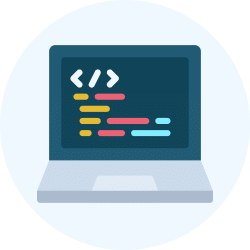Data Models | Database Management System (DBMS) - Software Development PDF Download
| Table of contents |

|
| Introduction |

|
| What are Data Models? |

|
| Importance of Data Models in DBMS |

|
| Types of Data Models |

|
| Simple Code Examples |

|
| Sample Problems and Solutions |

|
| Conclusion |

|
Introduction
When it comes to managing data efficiently, a Database Management System (DBMS) plays a crucial role. In order to organize and structure data effectively, data models are used within a DBMS. In this article, we will explore the concept of data models, their importance, and different types of data models commonly used in DBMS. We will also provide examples and simple code snippets to help you grasp the concepts more easily.
What are Data Models?
Data models in DBMS provide a logical representation of data and its relationships within a database. They help in structuring the data and defining the rules for how data should be stored, organized, and accessed. A data model acts as a blueprint for a database system, enabling developers to design, implement, and manage databases effectively.
Importance of Data Models in DBMS
Data models offer several benefits in the field of database management:
- Data Organization: Data models provide a structured approach to organizing data, ensuring efficient storage and retrieval.
- Data Integrity: By defining relationships and constraints, data models help maintain data integrity and prevent inconsistencies.
- Application Development: Data models serve as a foundation for application development, allowing developers to create software that interacts with databases seamlessly.
- Data Independence: Changes in the data model do not impact the applications built on top of it, promoting data independence.
- Collaboration: Data models act as a common language between developers, analysts, and stakeholders, facilitating collaboration and understanding.
Types of Data Models
There are various types of data models used in DBMS. Let's explore some of the commonly used ones:
- Hierarchical Data Model: In a hierarchical data model, data is organized in a tree-like structure, where each parent node can have multiple child nodes, but each child node can only have one parent. This model is commonly used in mainframe database systems.
Example: Consider a university's organizational structure, where the university is the root node, and departments, faculties, and courses are child nodes. - Network Data Model: The network data model is an extension of the hierarchical data model. It allows nodes to have multiple parent and child nodes, creating a more complex network-like structure. This model is useful for representing many-to-many relationships.
Example: A library system where a book can be written by multiple authors, and an author can write multiple books. - Relational Data Model: The relational data model is the most widely used data model in DBMS. It organizes data into tables consisting of rows (records) and columns (attributes). The relationship between tables is established through primary and foreign keys, enabling efficient data retrieval using structured query language (SQL).
Example: Consider a "Students" table with columns like "StudentID," "Name," and "Department," and a "Courses" table with columns like "CourseID," "CourseName," and "Instructor." The relationship between the two tables can be established using the "StudentID" and "CourseID" columns. - Entity-Relationship (ER) Data Model: The ER data model focuses on the relationships between entities and represents them using entities, attributes, and relationships. It helps in designing databases based on real-world entities and their associations.
Example: In a social media application, the ER model would represent entities like "User," "Post," "Comment," and relationships like "User likes Post," "User comments on Post," etc.
Simple Code Examples
Let's take a look at some simple code examples in the context of the relational data model:
Creating Tables in Relational Data Model:
CREATE TABLE Students (
StudentID INT PRIMARY KEY,
Name VARCHAR(50),
Department VARCHAR(50)
);
CREATE TABLE Courses (
CourseID INT PRIMARY KEY,
CourseName VARCHAR(50),
Instructor VARCHAR(50)
);
Querying Data in Relational Data Model:
SELECT Name, CourseName
FROM Students
JOIN Courses ON Students.StudentID = Courses.StudentID
WHERE Department = 'Computer Science';
Sample Problems and Solutions
Problem 1: Create a relational data model for an online shopping system, considering entities like "User," "Product," and "Order." Define appropriate attributes and relationships.
User (UserID, Name, Email, Address)
Product (ProductID, Name, Price, Description)
Order (OrderID, UserID, ProductID, Quantity, TotalPrice)
Problem 2: Design an ER data model for a banking system, considering entities like "Account," "Customer," and "Transaction." Define appropriate attributes and relationships.
Customer (CustomerID, Name, Address)
Account (AccountID, CustomerID, Balance)
Transaction (TransactionID, AccountID, Amount, Date)
Conclusion
Data models play a crucial role in the field of database management. They provide a logical representation of data, enabling efficient organization, retrieval, and management. By understanding different types of data models and their applications, you can design effective database systems and develop robust applications. Keep exploring and experimenting with data models to enhance your understanding and proficiency in DBMS.
|
75 videos|44 docs|12 tests
|














